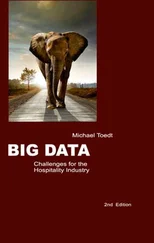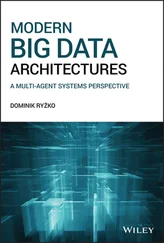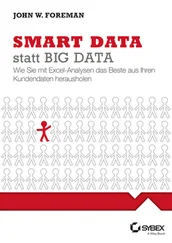1 ...6 7 8 10 11 12 ...15
1.10 Big Data Applications
Banking and Securities – Credit/debit card fraud detection, warning for securities fraud, credit risk reporting, customer data analytics.
Healthcare sector – Storing the patient data and analyzing the data to detect various medical ailments at an early stage.
Marketing – Analyzing customer purchase history to reach the right customers in order market their newly launched products.
Web analysis – Social media data, data from search engines, and so forth, are analyzed to broadcast advertisements based on their interests.
Call center analytics – Big data technology is used to identify the recurring problems and staff behavior patterns by capturing and processing the call content.
Agriculture–Sensors are used by biotechnology firms to optimize crop efficiency. Big data technology is used in analyzing the sensor data.
Smartphones—Facial recognition feature of smart phones is used to unlock their phones, retrieve information about a person with the information previously stored in their smartphones.
1.11 Big Data Use Cases
1.11.1 Health Care
To cope up with the massive flood of information generated at a high velocity, medical institutions are looking around for a breakthrough to handle this digital flood to aid them to enhance their health care services and create a successful business model. Health care executives believe adopting innovative business technologies will reduce the cost incurred by the patients for health care and help them provide finer quality medical services. But the challenges in integrating patient data that are so large and complex growing at a faster rate hampers their efforts in improving clinical performance and converting the assets to business value.
Hadoop, the framework of big data, plays a major role in health care making big data storage and processing less expensive and highly available, giving more insight to the doctors. It has become possible with the advent of big data technologies that doctors can monitor the health of the patients who reside in a place that is remote from the hospital by making the patients wear watch‐like devices. The devices will send reports of the health of the patients, and when any issue arises or if patients’ health deteriorates, it automatically alerts the doctor.
With the development of health care information technology, the patient data can be electronically captured, stored, and moved across the universe, and health care can be provided with increased efficiency in diagnosing and treating the patient and tremendously improved quality of service. Health care in recent trend is evidence based, which means analyzing the patient’s healthcare records from heterogeneous sources such as EHR, clinical text, biomedical signals, sensing data, biomedical images, and genomic data and inferring the patient’s health from the analysis. The biggest challenge in health care is to store, access, organize, validate, and analyze this massive and complex data; also the challenge is even bigger for processing the data generated at an ever increasing speed. The need for real‐time and computationally intensive analysis of patient data generated from ICU is also increasing. Big data technologies have evolved as a solution for the critical issues in health care, which provides real‐time solutions and deploy advanced health care facilities. The major benefits of big data in health care are preventing disease, identifying modifiable risk factors, and preventing the ailment from becoming very serious, and its major applications are medical decision supporting, administrator decision support, personal health management, and public epidemic alert.
Big data gathered from heterogeneous sources are utilized to analyze the data and find patterns which can be the solution to cure the ailment and prevent its occurrence in the future.
Big data promotes growth and increases profitability across telecom by optimizing the quality of service. It analyzes the network traffic, analyzes the call data in real‐time to detect any fraudulent behavior, allows call center representatives to modify subscribers plan immediately on request, utilizes the insight gained by analyzing the customer behavior and usage to evolve new plans and services to increase profitability, that is, provide personalized service based on consumer interest.
Telecom operators could analyze the customer preferences and behaviors to enable the recommendation engine to match plans to their price preferences and offer better add‐ons. Operators lower the costs to retain the existing customers and identify cross‐selling opportunities to improve or maintain the average revenue per customer and reduce churn. Big data analytics can further be used to improve the customer care services. Automated procedures can be imposed based on the understanding of customers’ repetitive calls to solve specific issues to provide faster resolution. Delivering better customer service compared to its competitors can be a key strategy in attracting customers to their brand. Big data technology optimizes business strategy by setting new business models and higher business targets. Analyzing the sales history of products and services that previously existed allows the operators to predict the outcome or revenue of new services or products to be launched.
Network performance, the operator’s major concern, can be improved with big data analytics by identifying the underlying issue and performing real‐time troubleshooting to fix the issue. Marketing and sales, the major domain of telecom, utilize big data technology to analyze and improve the marketing strategy and increase the sales to increase revenue.
1.11.3 Financial Services
Financial services utilize big data technology in credit risk, wealth management, banking, and foreign exchange to name a few. Risk management is of high priority for a finance organization, and big data is used to manage various types of risks associated with the financial sector. Some of the risks involved in financial organizations are liquidity risk, operational risk, interest rate risk, the impact of natural calamities, the risk of losing valuable customers due to existing competition, and uncertain financial markets. Big data technologies derive solutions in real time resulting in better risk management.
Issuing loans to organizations and individuals is the major sector of business for a financial institution. Issuing loans is primarily done on the basis of creditworthiness of an organization or individual. Big data technology is now being used to find the credit worthiness based on latest business deals of an organization, partnership organizations, and new products that are to be launched. In the case of individuals, the credit worthiness is determined based on their social activity, their interest, and purchasing behavior.
Financial institutions are exposed to fraudulent activities by consumers, which cause heavy losses. Predictive analytics tools of big data are used to identify new patterns of fraud and prevent them. Data from multiples sources such as shopping patterns and previous transactions are correlated to detect and prevent credit card fraud by utilizing in‐memory technology to analyze terabytes of streaming data to detect fraud in real time.
Big data solutions are used in financial institutions call center operations to predict and resolve customer issues before they affect the customer; also, the customers can resolve the issues via self‐service giving them more control. This is to go beyond customer expectations and provide better financial services. Investment guidance is also provided to consumers where wealth management advisors are used to help out consumers for making investments. Now with big data solutions these advisors are armed with insights from the data gathered from multiple sources.
Читать дальше
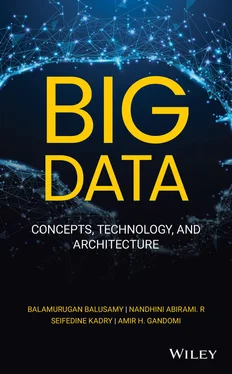

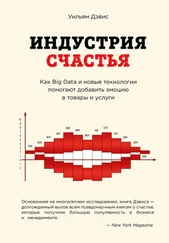

![Алексей Благирев - Big data простым языком [litres]](/books/416853/aleksej-blagirev-big-data-prostym-yazykom-litres-thumb.webp)


